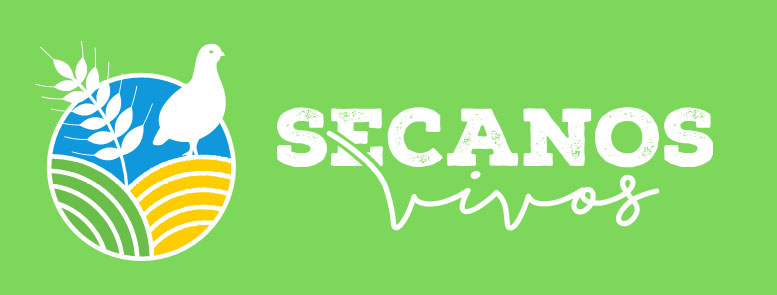
Biodiversity Foundation Project: Living Drylands: Towards extensive, biodiverse, and profitable dryland agrosystems
- Type Project
- Execution 2022
- Scope Europeo
- Main source of financing Recovery, Transformation and Resilience Plan (PRTR)
- Project website Web proyecto (Fundación Biodiversidad)
Secanos Vivos aims to promote the bioeconomy of rainfed agrosystems (cereals and vineyards), which are of broad socio-environmental interest but are clearly in decline in terms of land area and economics. It will do so through good agro-environmental practices and Nature-based Solutions (NBS).
Within the framework of the project, stewardship agreements will be signed with owners of dryland crop plots, where action plans will be implemented to increase biodiversity and ecosystem services, as well as climate change resilience. Technical teams and farmers will be trained, and profitability and commercial plans for products will be developed, promoting the "Living Drylands" label. All this will be accompanied by training and capacity building activities to promote sustainable tourism and agritourism, the development of proposals for the 2023 CAP reform, and the preparation of recommendations for the agri-food sector. Work is expected to be carried out on 30 plots (20 for cereals and 10 for vines), covering 500 hectares, where increases in biodiversity and climate resilience indicators are expected to be recorded. At least 17 plots of land and eight industries are expected to be certified with the Living Drylands seal, fostering productive diversification (20 products and/or services will be designed for marketing, along with five new businesses and ten new economic initiatives linked to the farms) and reducing the number of plots with negative net margins by up to 25%. The project also plans to create 12 jobs, develop training activities that will reach 1,000 people, organize 25 mini-ornithological marathons, accelerate 30 ventures linked to the project's values and objectives, and hold six workshops on the CAP to formulate up to 12 improvement proposals.
Extensive rainfed agricultural systems are seriously threatened, both by their intensification toward more productive models and by the abandonment of agricultural activity and its substitution for other uses (especially energy infrastructure). Between 1990 and 2013, the area of rainfed land decreased by 21.5%. Their lack of profitability is their main weakness and reason for transformation. Both agricultural intensification and abandonment lead to a loss of biodiversity (30% of birds have disappeared in the last 20 years) and ecosystem services that regulate climate change (the current food system generates 29% of emissions and consumes 80% of freshwater); and multiple challenges to maintaining the balance of population and cultural heritage and maintaining cohesion between rural and urban areas (more than 80% of the population lives in cities).
Living Drylands aims to contribute to the implementation of the European Biodiversity and Farm to Fork Strategies through a profitable and sustainable ecological transition for extensive dryland cereal and vineyard agroecosystems at risk of extinction and with threatened biodiversity, yet with transformative potential to provide multiple positive externalities to society. To this end, it will implement sustainable production models (based on scientific and technical grounds) and innovate in the development of a value chain based on biodiversity and resilience to climate change.
- FUNDACIÓN AAP PARA LA ACOGIDA DE ANIMALES EXÓTICOS (AAP PRIMADOMUS)







